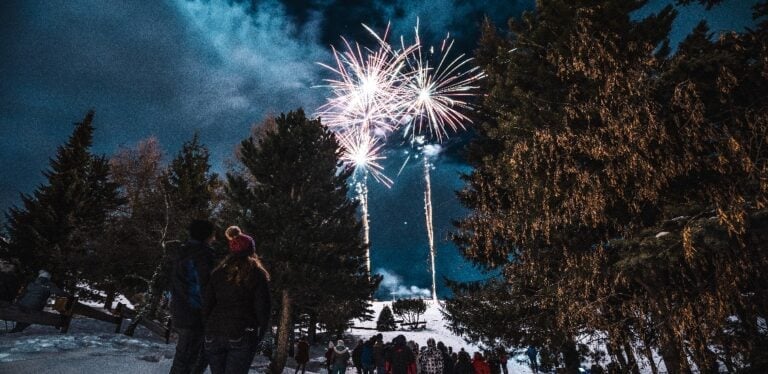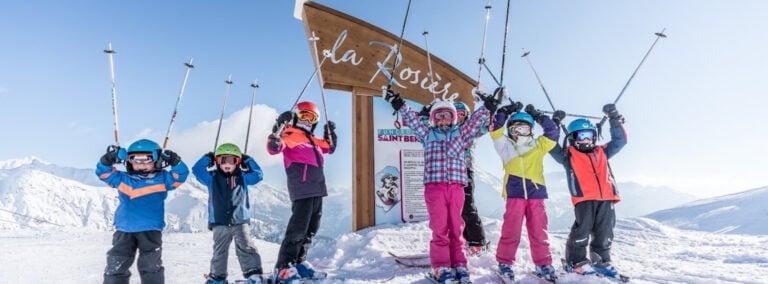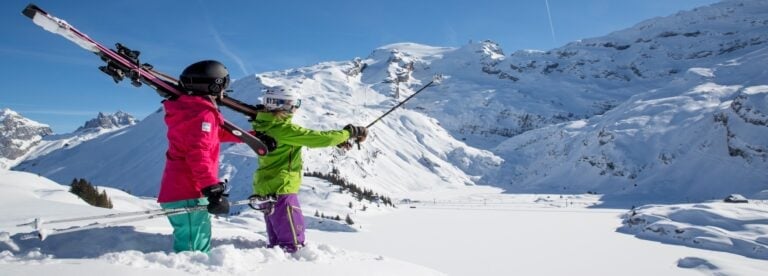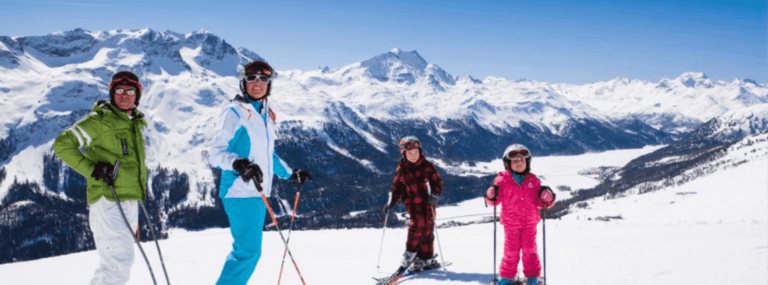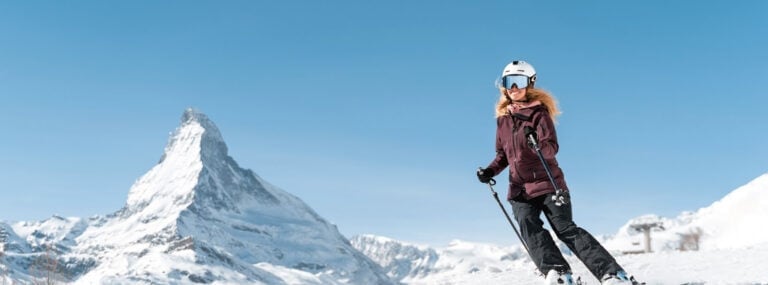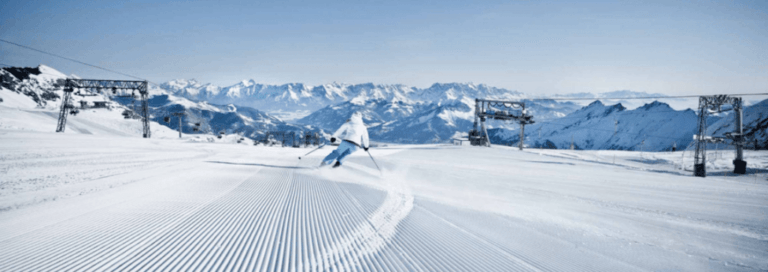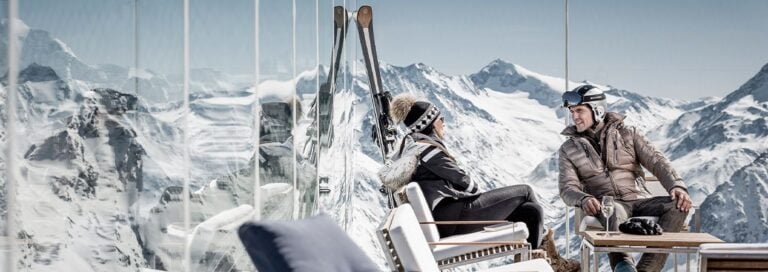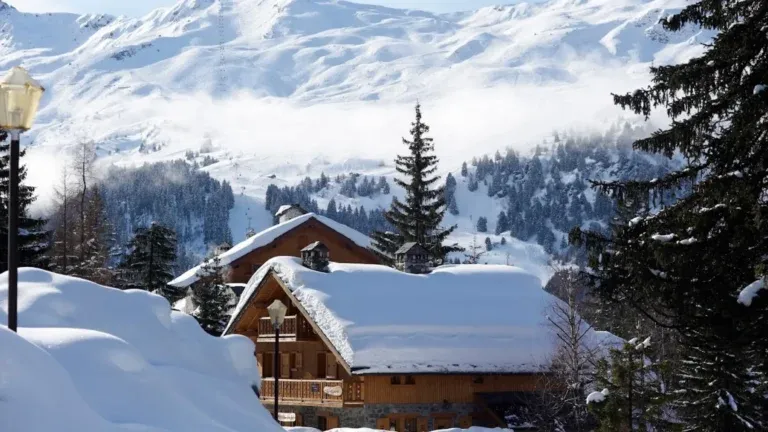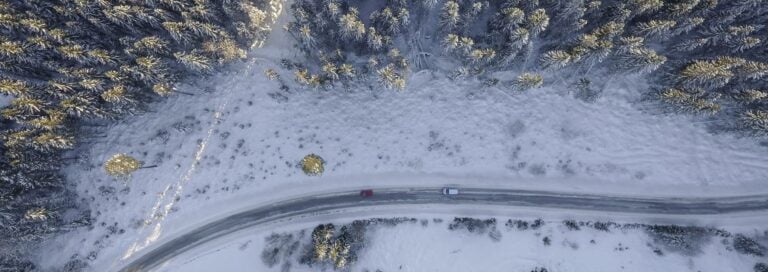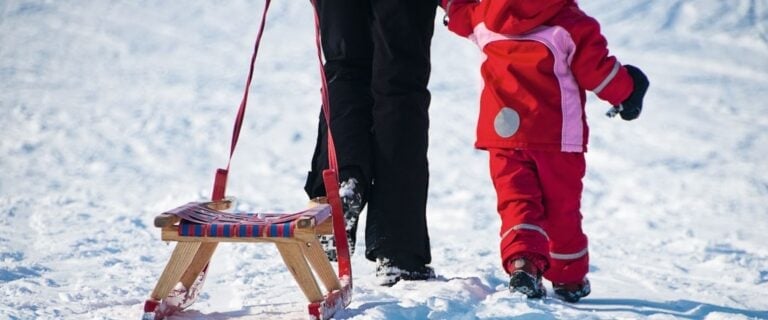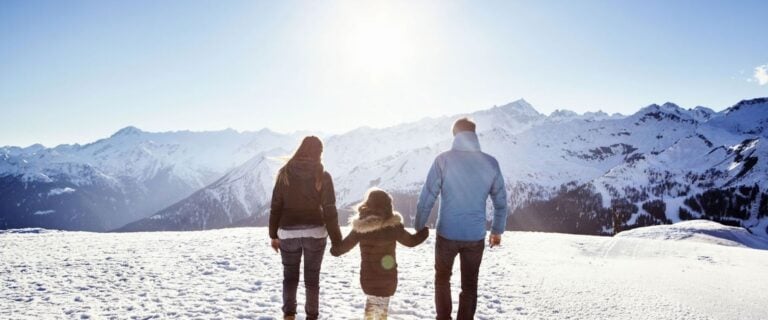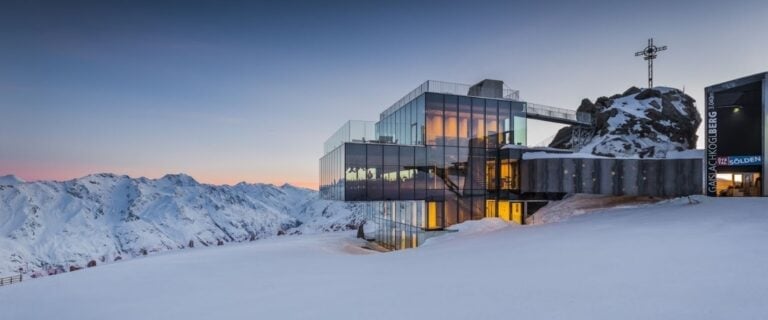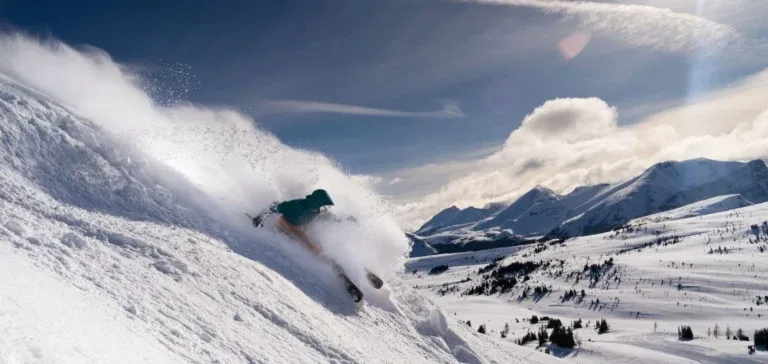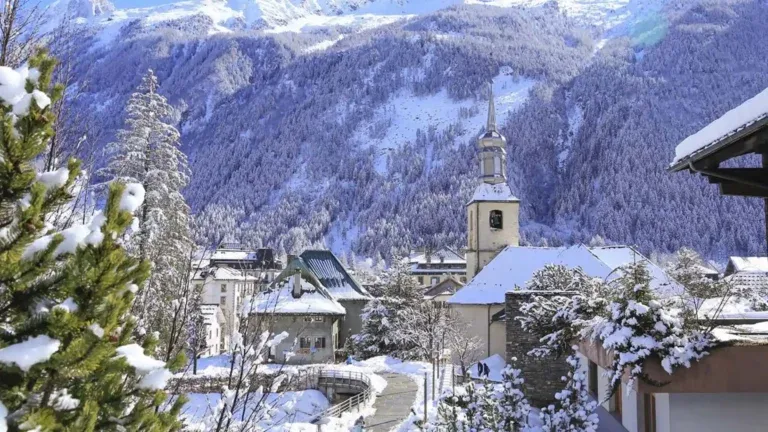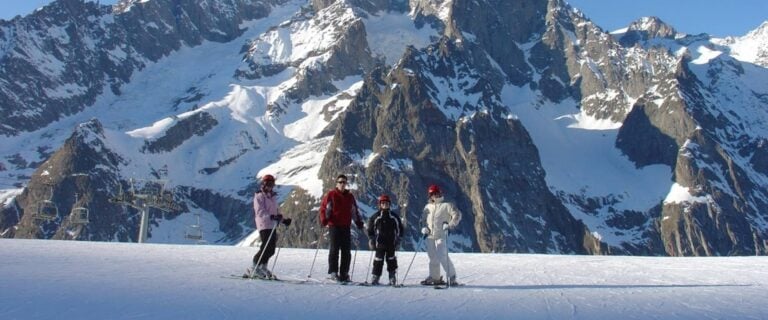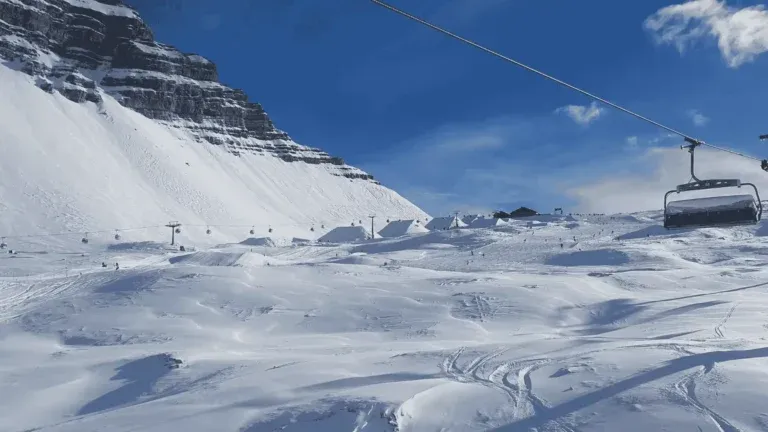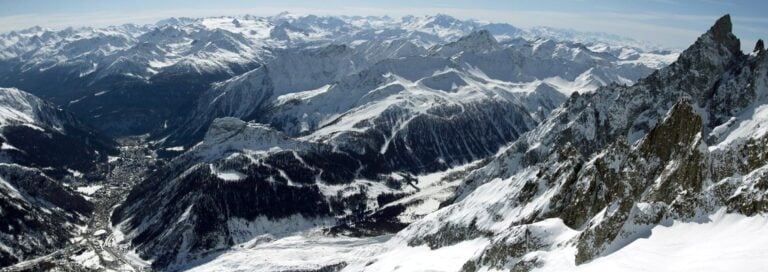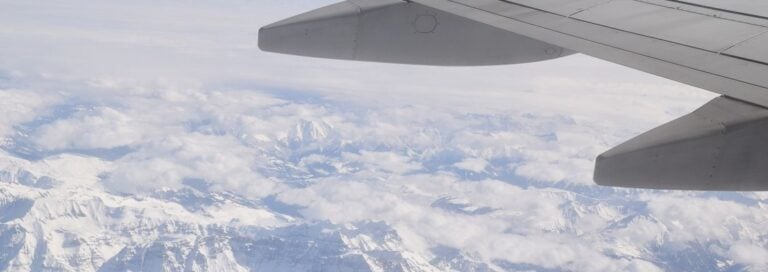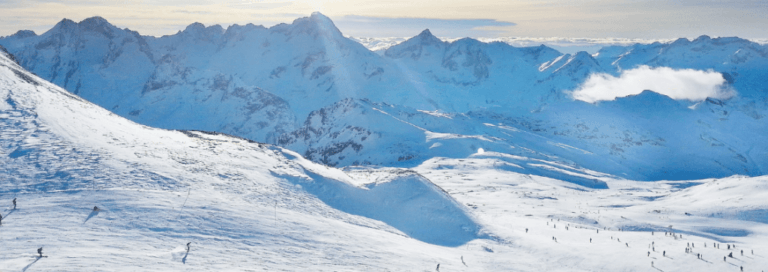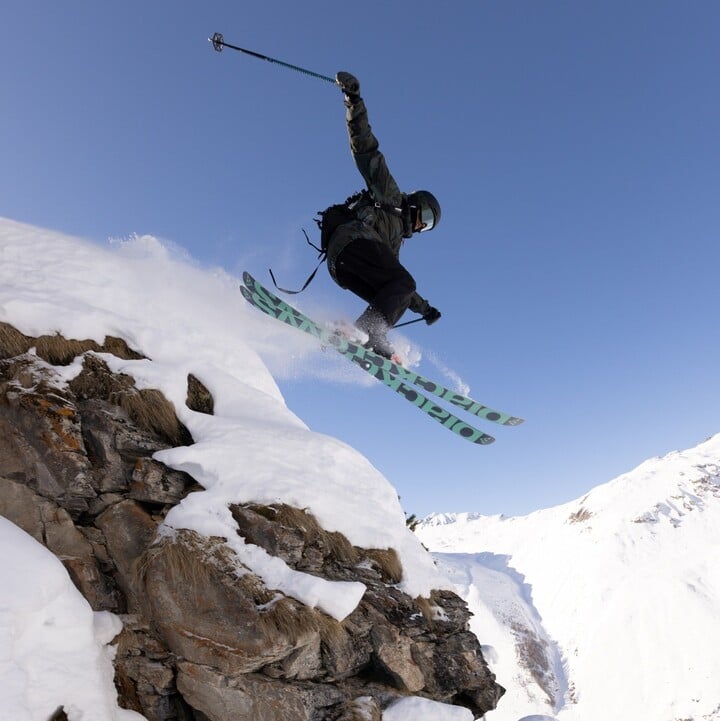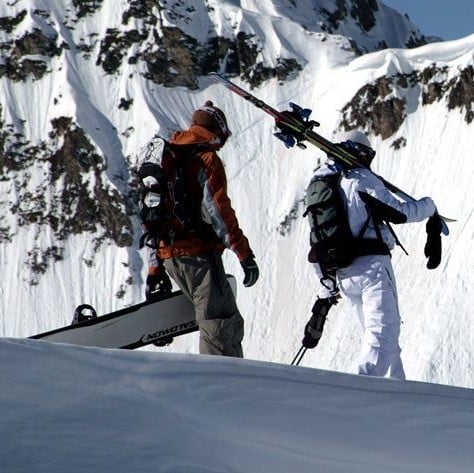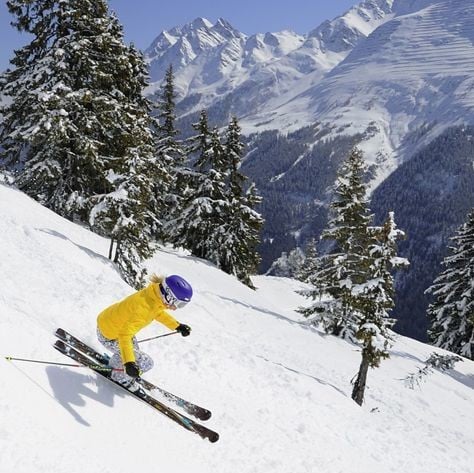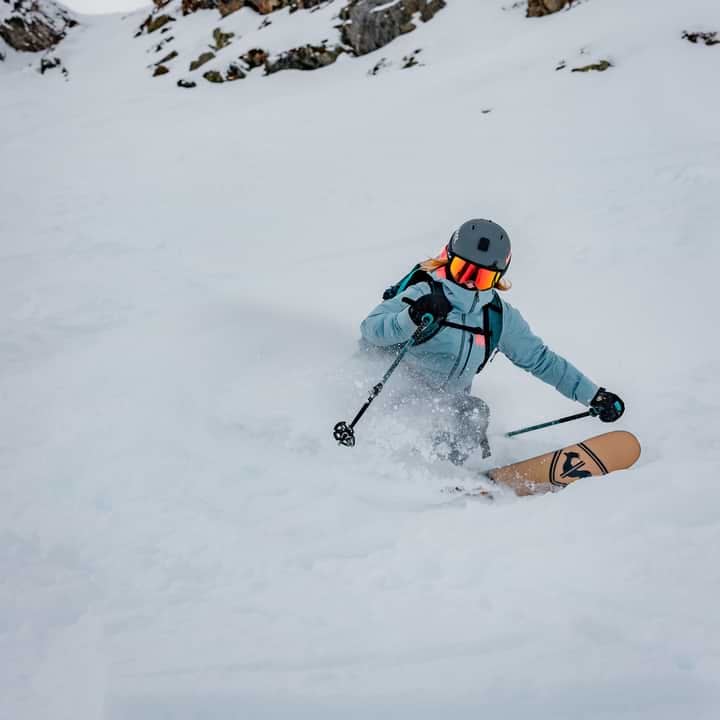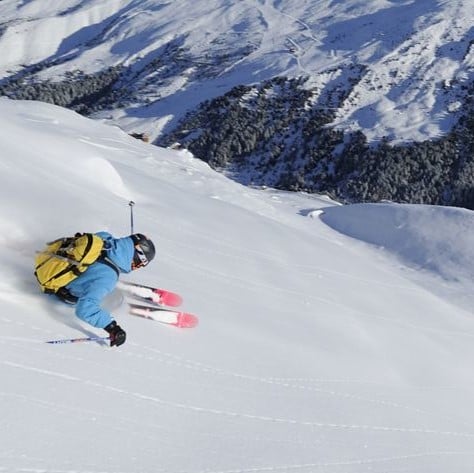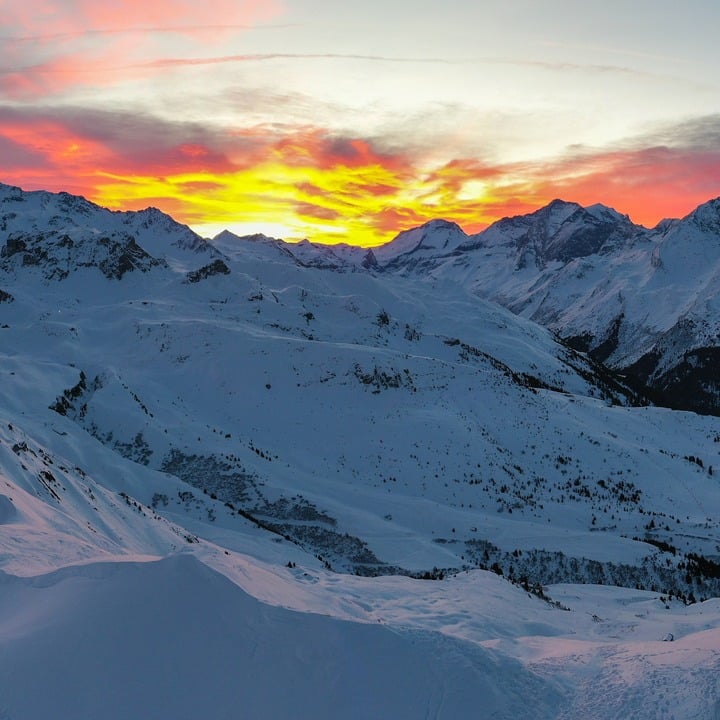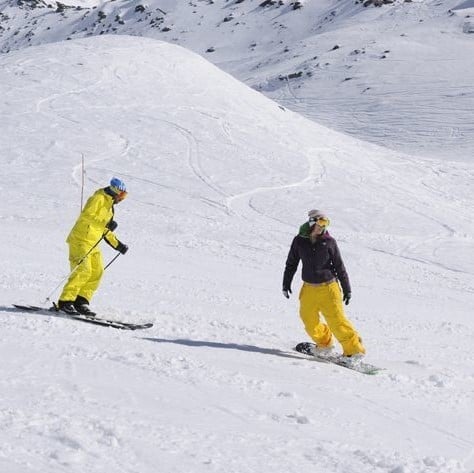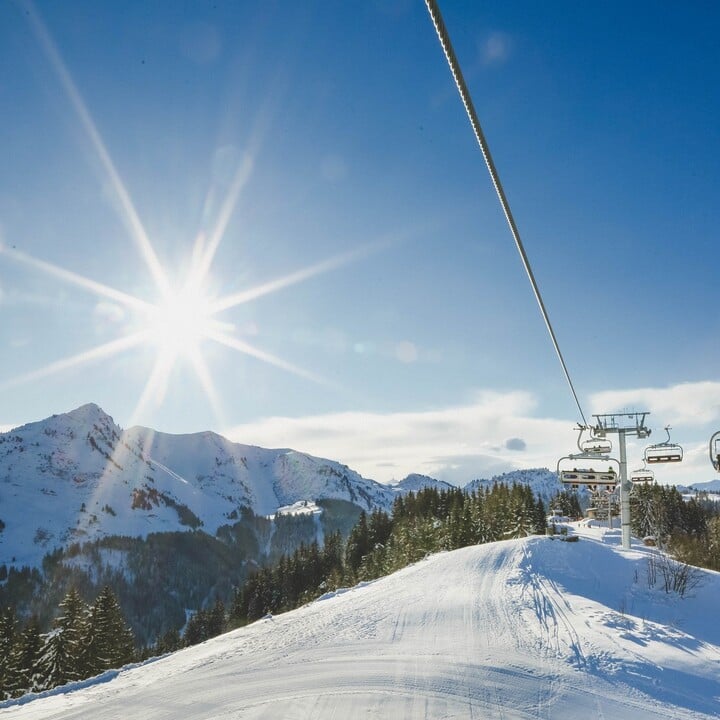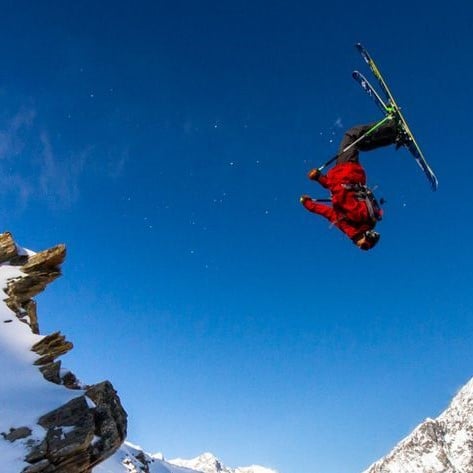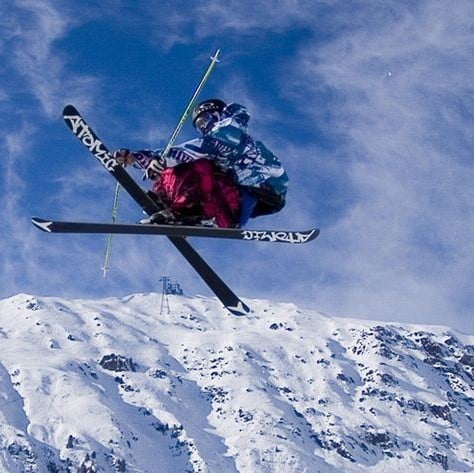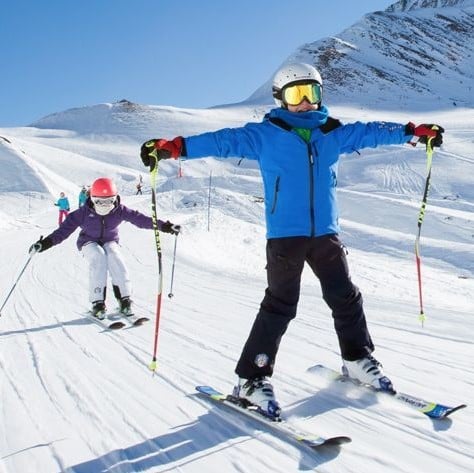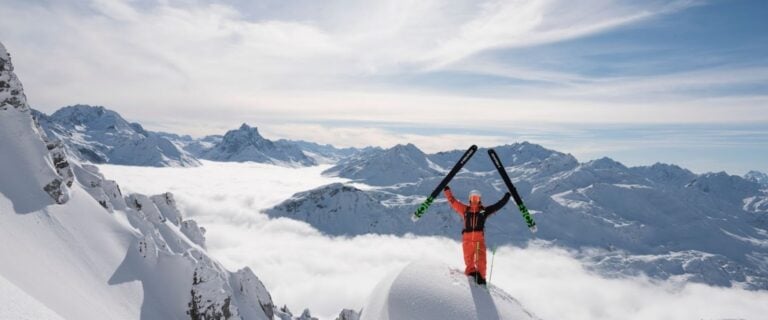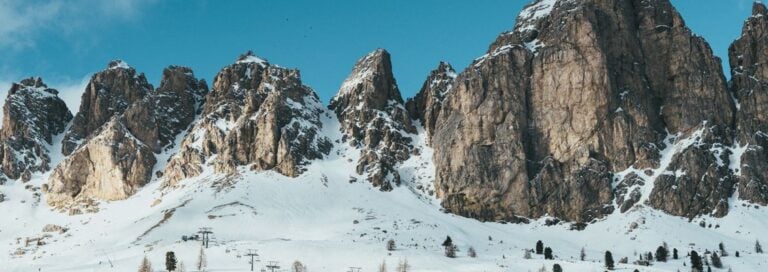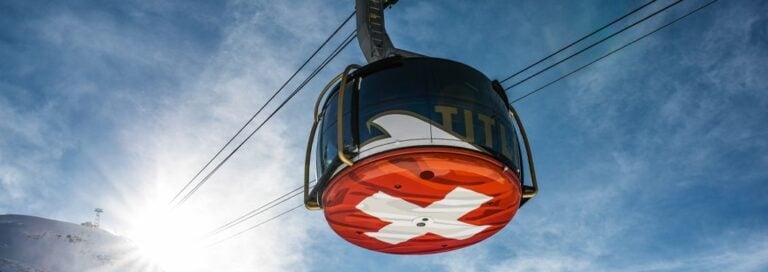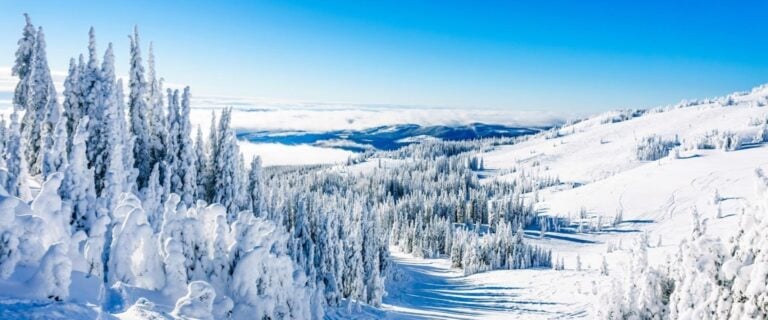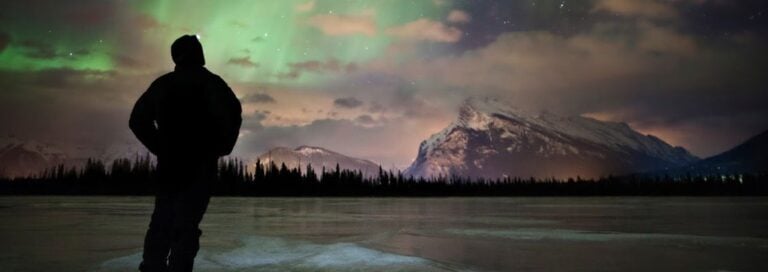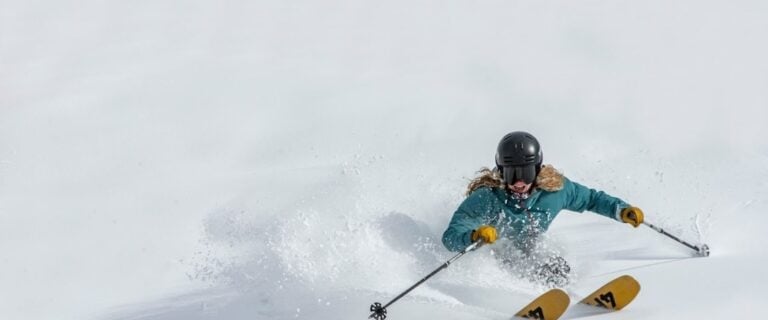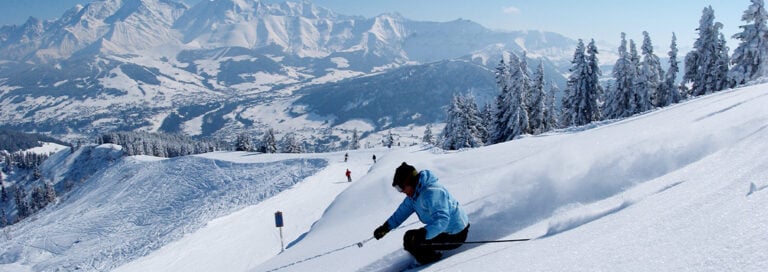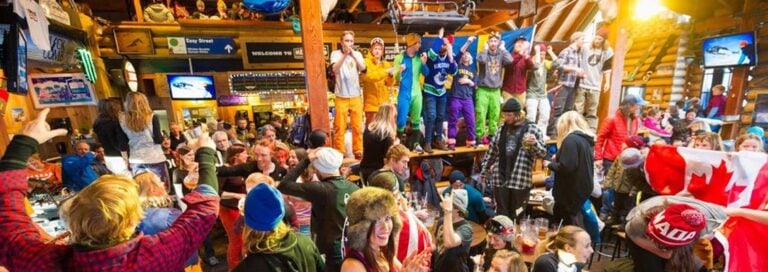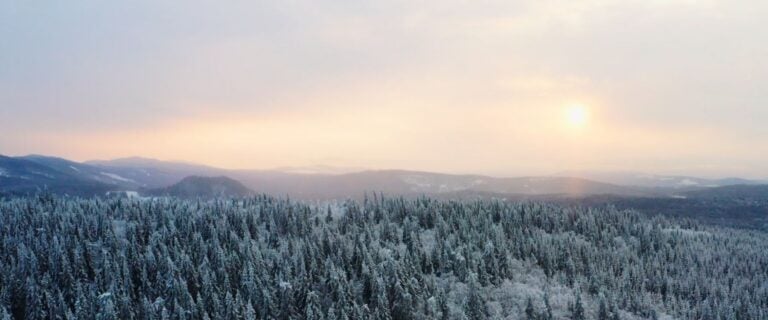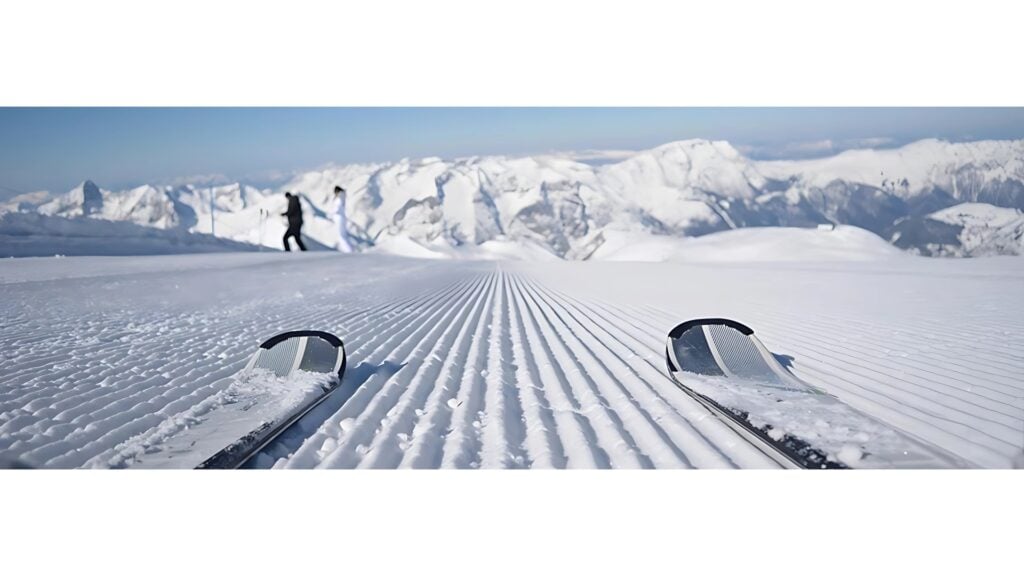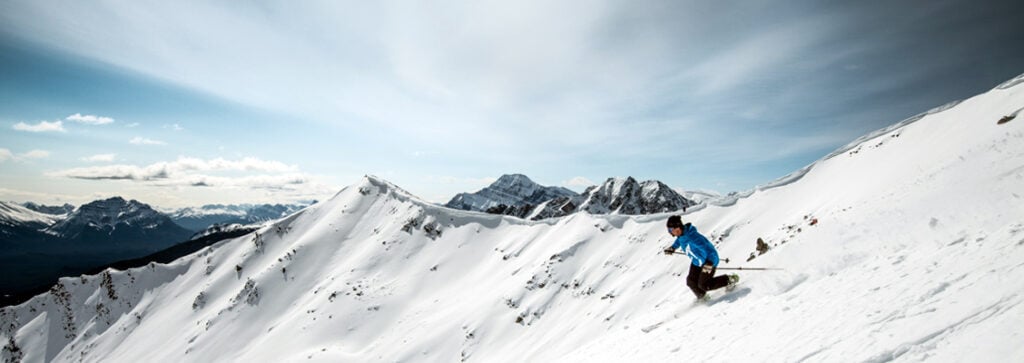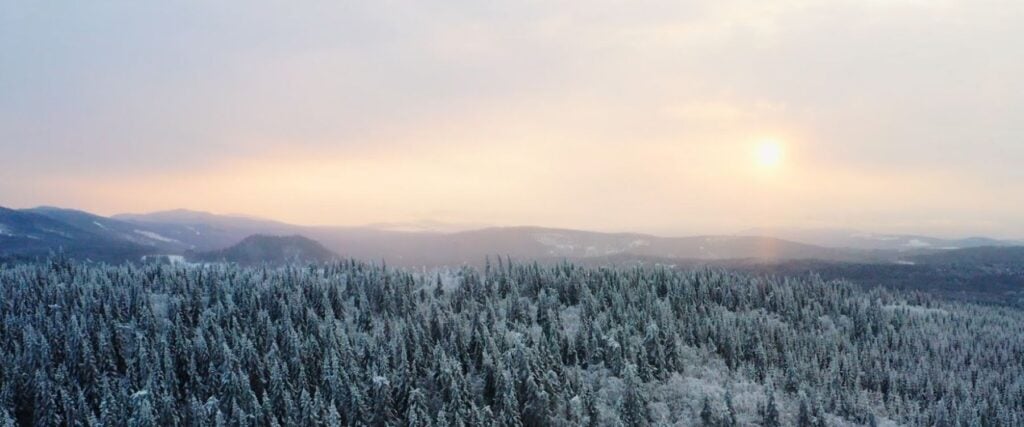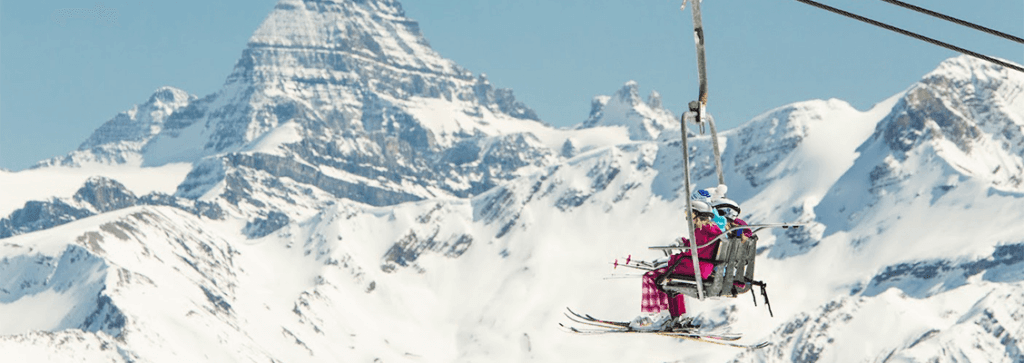Ski safety on the slopes is important to maximise your enjoyment on your ski holidays. Knowing how to position yourself on the mountain and being familiar with your equipment are key to reducing the risk of injury. Whether you’re a beginner or advanced skier, take a look at the Ski Way Code from the International Ski Federation (FIS) and a few tips from our experiences on the slopes. Here are our top tips for when you’re on the slopes.

Ski Way Code
The governing body of snowsports, the FIS, has created a Rules of Conduct to clearly outline how skiers should conduct themselves on the slopes. One of our top tips to read for when you’re on the slopes.
1. Respect for others
A skier/snowboarder must behave in a way that they do not endanger or prejudice others.
2. Control of speed and skiing or snowboarding
Every person on the slopes must move in control. They must adapt their speed and manner of skiing or snowboarding to their personal ability, change of conditions, type of terrain and the density of traffic.
3. Choice of route
A skier/snowboarder must choose a route in such a way as not to endanger others.
4. Overtaking
Those on the slopes may overtake another skier/snowboarder above or below and to the right or the left provided so that they leave enough space for the overtaken skier/snowboarder to make any voluntary or involuntary movement.
5. Entering, starting and moving upwards
When entering a marked run, starting again or moving upwards on the piste skiers/snowboarders must look up and down the slopes without endangering themselves or others. This is very important for ski safety.
6. Stopping
Unless it is absolutely necessary, a skier/snowboarder must avoid stopping on the piste in narrow places or when visibility is restricted. After a fall in such a place, a skier or snowboarder must try to move and clear the slope as soon as possible if they’re able to.
7. Climbing and descending on foot
A skier/snowboarder that is either climbing or descending on foot must keep to the side of the slope.
8. Respect for signs and markings
Anyone on the slopes must respect all signs and markings. All are made for ski safety in mind.
9. Assistance
When an accident occurs every skier/snowboarder is duty-bound to assist with help.
10. Identification
Every skier/snowboarder or witness, whether a responsible party or not, must exchange names and addresses following an accident.

Helmets
Although ski helmets will not 100% stop the risk of injury, they can significantly reduce the risk of a serious head injury. This is why more people now wear ski helmets on the slopes for ski safety.
Measure your head so you can get the right size of helmet. A correctly fitted helmet should feel snug and shouldn’t rattle with movement. It is important to remember comfort is key because you will be wearing this all day on the slopes. Wearing a helmet is highly recommended and is a top tip for when you’re on the slopes.

Insurance
It is important to take out travel insurance on any holiday but ski holidays are even more so. The cost of mountain rescue and treatment can be very high, so having a good insurance package will reduce the cost of an accident. Many insurance companies offer packages for ski holidays and will discuss ski safety measures.

Ski School
If you are a first-time skier, it is highly recommended to learn from the local ski schools in the area. Ski schools train ski instructors to a high standard so they offer the best tuition. This means you’ll be safer on the mountain and will learn best practices at the same time. All qualified instructors will have been on specific ski safety courses. Ski School lessons are an essential top tip for when you’re on the slopes.

Some extra top tips for when you’re on the slopes
- Unless you’re with a mountain guide do not head off-piste or out of boundaries.
- Put emergency numbers on your phone on the first day.
- Lift stations can also alert mountain rescue if there’s an accident.
- Remember the ski way code to keep with ski safety measures.
- Check your equipment each day.
- Read the weather forecast before you start your day. Sun cream is important on a sunny day, you can still get burnt in the winter. Wear appropriate layers on the mountain to keep warm.
- If the weather turns find the nearest lift station. In extreme weather, you can take shelter here and ski patrol can find the safest way to get back down. This is rare as the lifts close if the weather is predicted to be too extreme.
- There’s no harm in taking breaks when you need to. Especially on your first day on the slopes. Getting your ski legs back sometimes takes a bit of time.
- Don’t drink too much on the mountain. Like driving you are responsible for yourself and others’ safety on the slopes.
- Lastly, have fun, be safe and respect the mountain.
To find out more, please call our ski experts on 0207 471 7700.




